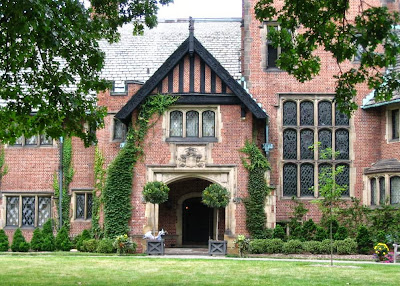books
internet
Pre-Raphaelites
the past
victorian
William Morris
Our New Design Library Kicks off with Two William Morris Titles
Along with history and design, one of our favorite pastimes is reading and designing books and publications, and through our publishing arm, American Biblioverken, we've set out to offer some quality paperback editions of important works from the past.The first two, Hopes and Fears for Art and The Art and Craft of Printing, are two of Morris' works that we have produced; both are primarily comprised of material and lectures from the late 19th century.
While they certainly can't match the beauty of a Kelmscott Press product, we feel they provide a far superior product than many of the commonly-available reprints available today, which often deliver a poorly-scanned copy of an old book and an ugly, generic cover that doesn't even relate to the material in the book. The interiors have been designed and typeset in fonts that enhance the material, and best of all, perhaps--the price is lower than most other new editions currently available.
These 6" x 9" editions make a great addition to anyone's bookshelf, and the low price make them great for casual reading on a trip, handy reference, or for students and classrooms.
We have several other older classics that we are preparing to add to our TLG Design Library, and we'll be sure to keep you updated as we bring them along. The books are available at Amazon and across Amazon Europe, including Amazon.uk
HOPES AND FEARS FOR ART / on Amazon $9.50 on Amazon UK £7.00
ISBN-10: 1492919187
THE ART AND CRAFT OF PRINTING / on Amazon $7.60 on Amazon UK £5.00
ISBN-10: 1493538977
While they certainly can't match the beauty of a Kelmscott Press product, we feel they provide a far superior product than many of the commonly-available reprints available today, which often deliver a poorly-scanned copy of an old book and an ugly, generic cover that doesn't even relate to the material in the book. The interiors have been designed and typeset in fonts that enhance the material, and best of all, perhaps--the price is lower than most other new editions currently available.
These 6" x 9" editions make a great addition to anyone's bookshelf, and the low price make them great for casual reading on a trip, handy reference, or for students and classrooms.
We have several other older classics that we are preparing to add to our TLG Design Library, and we'll be sure to keep you updated as we bring them along. The books are available at Amazon and across Amazon Europe, including Amazon.uk
HOPES AND FEARS FOR ART / on Amazon $9.50 on Amazon UK £7.00
List Price: $10.00
6" x 9" (15.24 x 22.86 cm)
Black & White on Cream paper
198 pages
ISBN-13: 978-1492919186 Black & White on Cream paper
198 pages
ISBN-10: 1492919187
THE ART AND CRAFT OF PRINTING / on Amazon $7.60 on Amazon UK £5.00
6" x 9" (15.24 x 22.86 cm)
Black & White on Cream paper
100 pages
ISBN-13: 978-1493538973 Black & White on Cream paper
100 pages
ISBN-10: 1493538977














